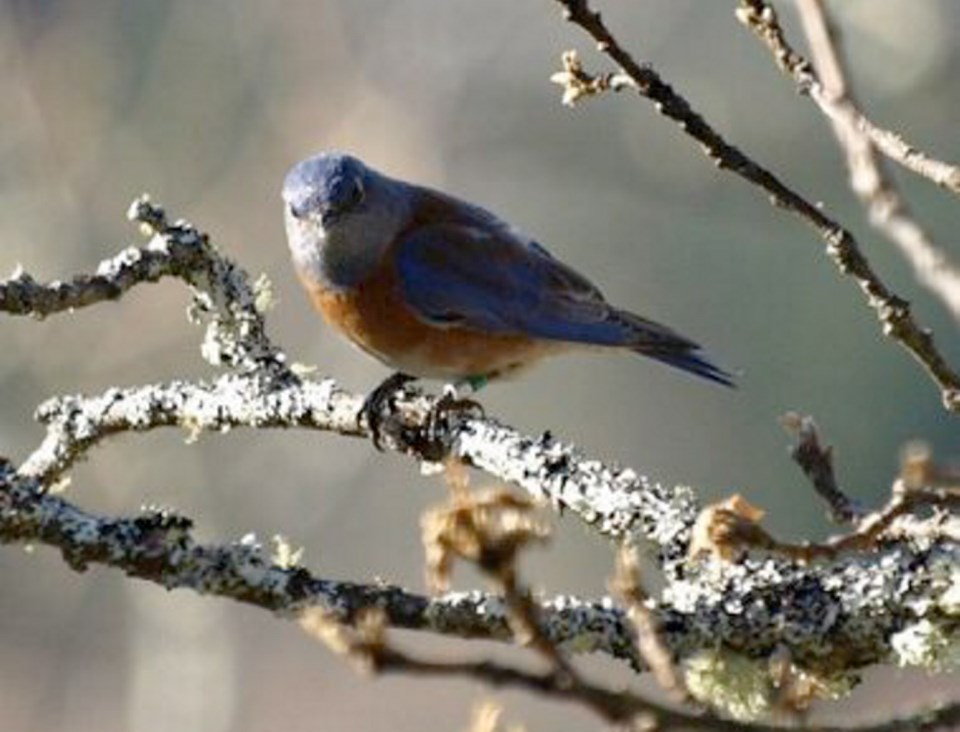A flock of 14 Western bluebirds spotted on Mount Tzouhalem, near Duncan, have conservationists hopeful that a once common species is returning to the Island.
It’s an auspicious sign that repopulation efforts are on track and could also mean the birds chose not to migrate this season.
While the long-term implications of staying home for a season are unknown, it bodes well in the short term, said Jemma Green, project co-ordinator for the Garry Oak Ecosystems Recovery Team, which leads the Bring Back the Bluebirds Project. “We think it’s great in the sense that these bluebirds, if they survive the next few weeks, will be here to start the breeding season,” Green said.
The Western bluebird was once common in Garry oak ecosystems on southern Vancouver Island and the southern Gulf Islands. But as those ecosystems began disappearing, so did the birds that called them home.
The last time a flock is known to have nested on the Island was 1995.
“We lost those big old Garry oak trees that have the natural holes or cavities that the bluebirds nest in. Without the habitat, they couldn’t breed,” Green said.
The team began working with private landowners to install nesting boxes in 2004. In 2012, it introduced four pairs of bluebirds to Vancouver Island, one of which “stuck.”
The new birds come from a 300-strong population in southern Washington, which itself was on the brink of disappearing, Green said. That population has grown thanks to habitat rehabilitation.
The birds are taken to the Cowichan Valley where they acclimatize in an aviary. After a week or two, pairs are released to breed. “They select a nest box nearby and the rest is history,” Green said.
Each year, more pairs are introduced. Last summer, conservationists believe there were 18 adults and 50 juveniles in the valley.
It’s possible the 14 birds now in the valley will still migrate or already did, said Ann Nightingale, past president of the Rocky Point Bird Observatory. Bluebirds have held irregular migration patterns locally before, but she said any sighting is positive.
Other birds have plunged to the brink of extinction in the region because of human activity, then been brought back, Nightingale said. In the 20th century, raptors were decimated by use of the pesticide DDT and trumpeter swans declined when their feathers were popular fashion accessories.
“We’ve done a lot of harm to birds, destroying their habitats and food sources. Anything we do to help turn that around, I think, is a good thing.”
This is a corrected version of an earlier story.



